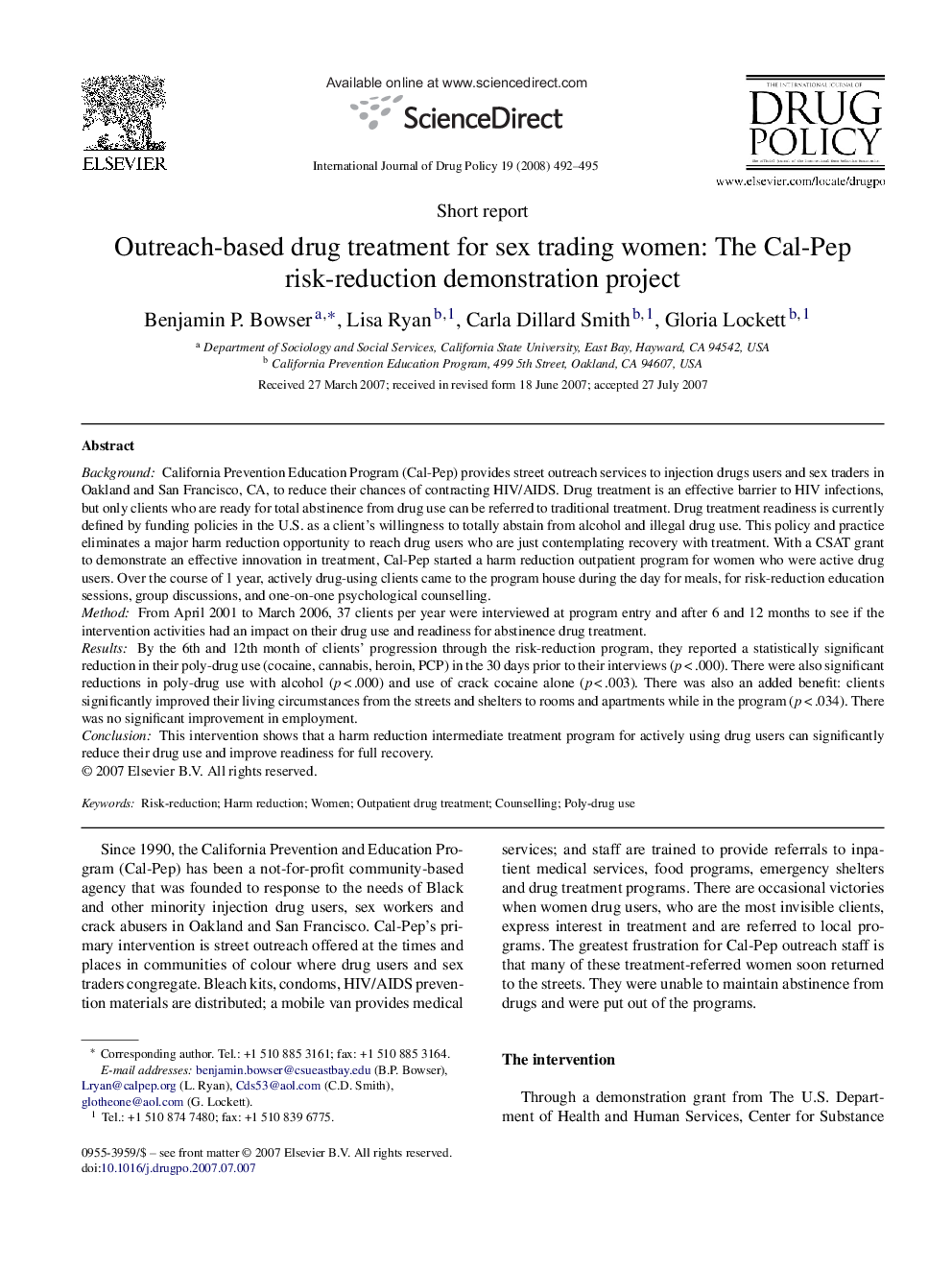| Article ID | Journal | Published Year | Pages | File Type |
|---|---|---|---|---|
| 1075418 | International Journal of Drug Policy | 2008 | 4 Pages |
BackgroundCalifornia Prevention Education Program (Cal-Pep) provides street outreach services to injection drugs users and sex traders in Oakland and San Francisco, CA, to reduce their chances of contracting HIV/AIDS. Drug treatment is an effective barrier to HIV infections, but only clients who are ready for total abstinence from drug use can be referred to traditional treatment. Drug treatment readiness is currently defined by funding policies in the U.S. as a client's willingness to totally abstain from alcohol and illegal drug use. This policy and practice eliminates a major harm reduction opportunity to reach drug users who are just contemplating recovery with treatment. With a CSAT grant to demonstrate an effective innovation in treatment, Cal-Pep started a harm reduction outpatient program for women who were active drug users. Over the course of 1 year, actively drug-using clients came to the program house during the day for meals, for risk-reduction education sessions, group discussions, and one-on-one psychological counselling.MethodFrom April 2001 to March 2006, 37 clients per year were interviewed at program entry and after 6 and 12 months to see if the intervention activities had an impact on their drug use and readiness for abstinence drug treatment.ResultsBy the 6th and 12th month of clients’ progression through the risk-reduction program, they reported a statistically significant reduction in their poly-drug use (cocaine, cannabis, heroin, PCP) in the 30 days prior to their interviews (p < .000). There were also significant reductions in poly-drug use with alcohol (p < .000) and use of crack cocaine alone (p < .003). There was also an added benefit: clients significantly improved their living circumstances from the streets and shelters to rooms and apartments while in the program (p < .034). There was no significant improvement in employment.ConclusionThis intervention shows that a harm reduction intermediate treatment program for actively using drug users can significantly reduce their drug use and improve readiness for full recovery.
